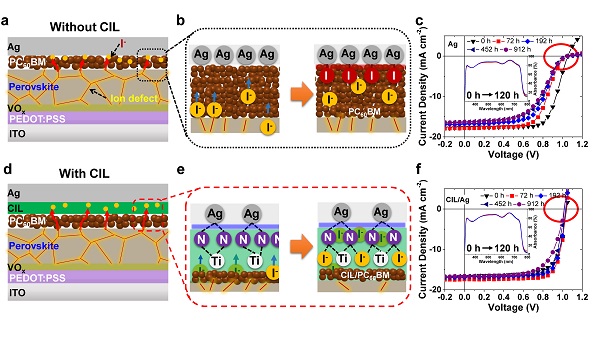Media Center
A multimedia mosaic of moments at GIST
GIST Excellence
[Press Release] Advancing the commercialization of next generation solar cells by identifying the lifespan issues, team lead by Professor Kwanghee Lee
- 엘리스 리
- REG_DATE : 2016.06.17
- HIT : 917
Advancing the commercialization of next generation solar cells by identifying the lifespan issues, team lead by Professor Kwanghee Lee

Picture (from left): Professor Kwanghee Lee, Dr. Hyung-chul Baek, and Dr. Keun-jin Kim
A research team led by Professor Kwanghee Lee has identified a cause of the short lifespan problem for the next generation ‘Perovskite’ solar cells and has developed long lifespan solar cells with support from the Korea Research Foundation, Ministry of Science, ICT and Future Planning’s basic research project, Climate Change Response Technology Development, and the New Industry Creation Project.
Organic-inorganic hybrid perovskite solar cells have exceeded 20% of the energy conversion efficiency, but its short lifespan has been an obstacle to its successful commercialization. The research team was the first to discover that the reduced efficiency in the solar cells was caused by halide negative ions that are created during the formation of the perovskite layers, which resulted in a short lifespan for the solar cells.

Professor Kwanghee Lee said, “We have identified the cause of low lifespan for perovskite solar cells and was able to improve the efficiency and extend the life for more than a year.” He added that, “This discovery will be a major turning point their successful commercialization.”
Their research paper has been included in the April 14 issue of the journal Energy & Environmental Science.